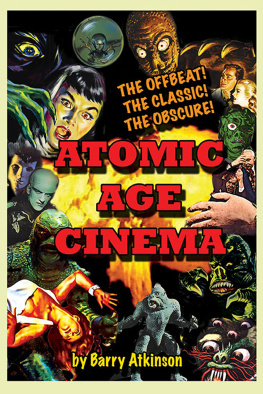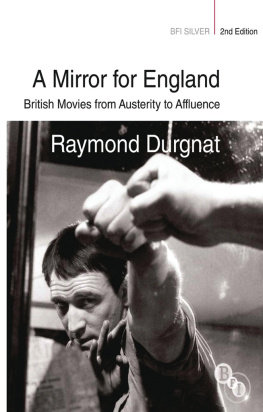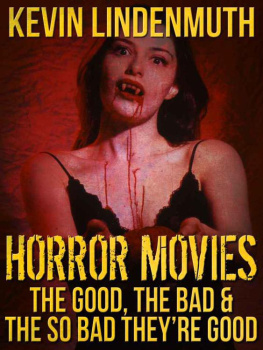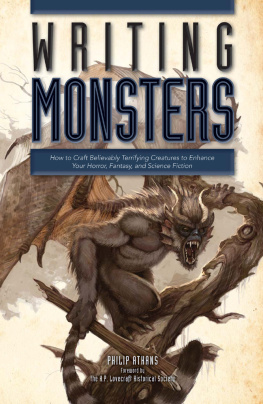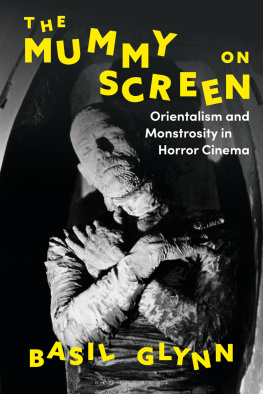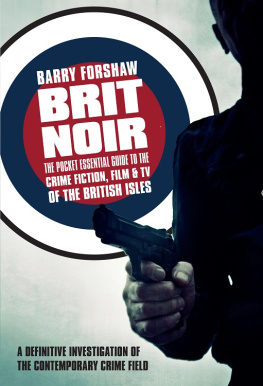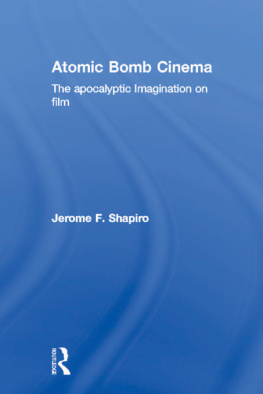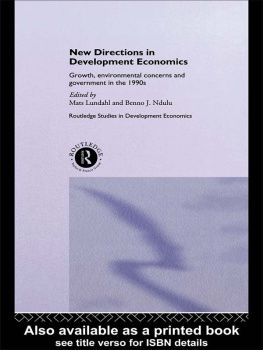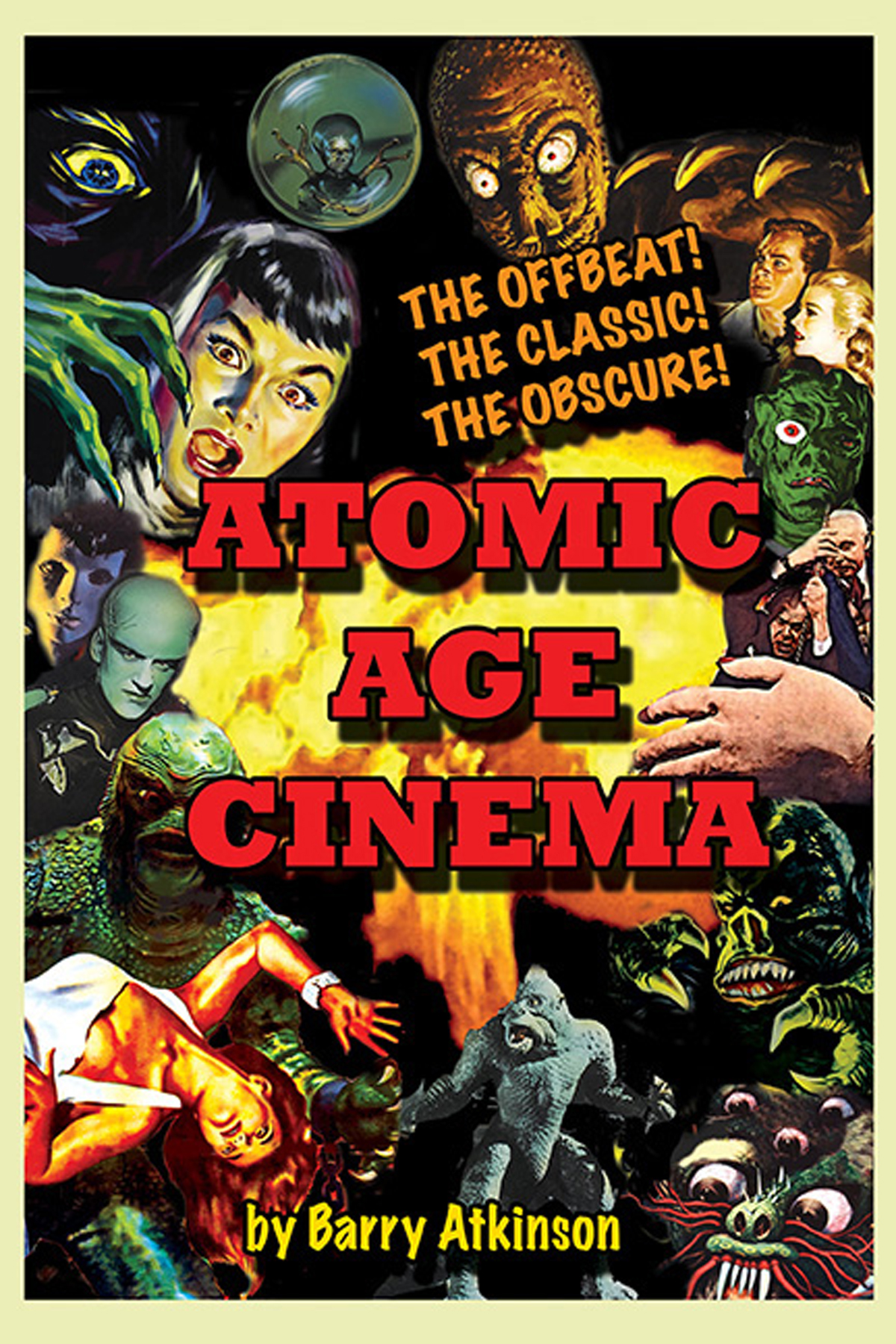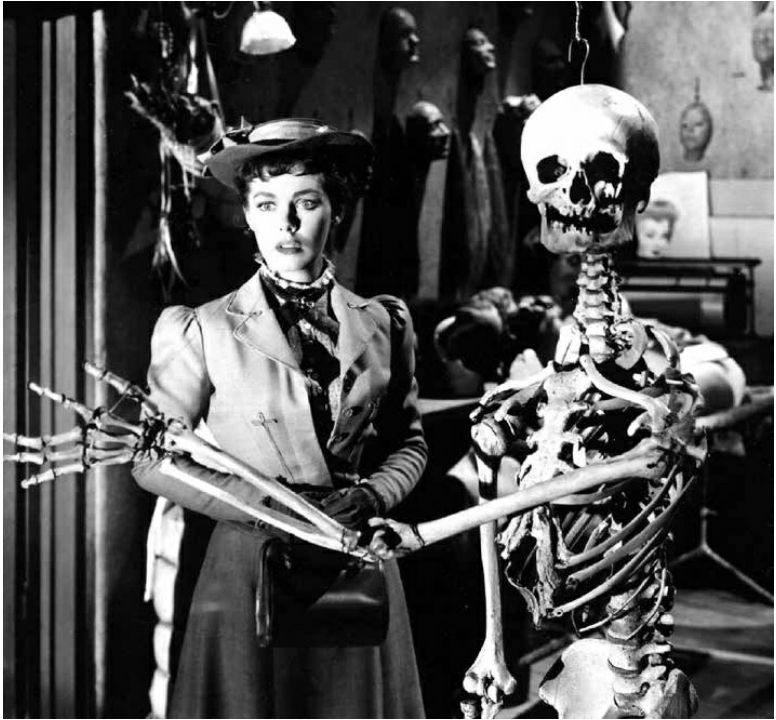
Phyllis Kirk as Sue Allen encounters a 3-D skeleton from House of Wax (1953).
Atomic Age Cinema: The Offbeat, The Classic and The Obscure
2018 Barry Atkinson. All Rights Reserved.
No part of this book may be reproduced in any form or by any means, electronic, mechanical, digital, photocopying or recording, except for the inclusion in a review, without permission in writing from the publisher.
This version of the book may be slightly abridged from the print version.

Published in the USA by:
BearManor Media
PO Box 71426
Albany, Georgia 31708
www.bearmanormedia.com
ISBN 978-1-936168-44-6
Cover Design A. Susan Svehla.
eBook construction by
Classic Cinema.
Timeless TV.
Retro Radio.
BearManor Media

See our complete catalog at www.bearmanormedia.com
Table of Contents
Chapter 3
The Studios, Actors and Directors
At the beginning of the 1950s, the chiefs of Hollywoods seven major players Universal-International, 20th Century Fox, Paramount, Warner Bros., MGM, United Artists and Columbia had to decide whether or not to take a financial risk and jump with both feet onto the snowballing fantasy bandwagon following the unexpected successes of Destination Moon, The Day the Earth Stood Still, When Worlds Collide and The Thing from Another World. Universals fortunes were in the doldrums following a spectacular run of classic horror pictures in the 30s and 40s; Fox tended to concentrate on big-budget productions with A-list stars, as did glamour studio MGM; Warner Bros. (along with Universal) put most of their efforts into that reliable old crowd-puller, the Western; United Artists showed a preference for drama; Columbia was the serial specialist and Paramount dealt with all genres, right across the board, including expensive epics. As the new wave of horror, fantasy and science fiction took hold of audiences imaginations and gained impetus, how did the big seven react to this fresh, atomic-themed genre? What did they come up with to appease cinema crowds, and what is their lasting legacy to fans of the fantastic?
To any underage English horror film buff sneaking into cinemas during the late 50s/early 60s, fervently hoping to catch the latest A-rated or X-rated presentation, Universal appeared to hold a monopoly on horror films. It certainly gave a damn good impression of doing so. Everywhere you looked in those days, a Universal double bill was showing on a Sunday: The Creature Walks Among Us c/w (coupled with) Tarantula; Monster on the Campus c/w The Land Unknown; The Mole People c/w Curucu, Beast of the Amazon; The Thing that Couldnt Die c/w Curse of the Undead; The Monolith Monsters c/w The Incredible Shrinking Man. That large black-and-white spinning globe was as familiar to us as Paramounts mountain, Foxs searchlights, Warner Bros. shield, Columbias statue and MGMs roaring lion. Also fast becoming familiar were Universals roster of players: John Agar, Nestor Paiva, Jeff Morrow, Rex Reason, Ross Elliott, Gregg Palmer, Grant Williams and Richard Carlson, plus all those sassy female leading ladies. From a very early age, I quickly latched onto the fact that a certain Jack Arnold was the genius behind a lot of these stylish monster-feature films. Arnold, like Edward L. Cahn, Roger Corman and many other fantasy directors, originated from the Budd Boetticher school of filmmaking. Boettichers spare Westerns are classics of their kind; stripped to the bone, not an ounce of fat, almost minimalist in conception and brief. They are masterpieces in filmic simplicity, lean and mean. Thats how Arnolds exciting movies came across to us youngsters in the dark confines of an auditorium; no flab, no flapping around, nothing superfluous to requirements, just fast-paced storytelling embodying tremendous, horrifying shocks that jolted us out of our seats.
Yes, a cursory glance at the Whats on next week section in the local papers of that time showed that Universal appeared to rule the roost in the 1950s, but on closer inspection, this isnt quite the case. From the perspective of the movies that constitute the theme of this book (horror, sci-fi, fantasy, noir, thriller, serials), Universals total amounts to 27, including productions given a Universal worldwide distribution ( Blood of the Vampire, The Man in the White Suit ).
Columbia, on the other hand, triumphs over the others with 41; United Artists is next with 35 (they also distributed quite a few minor features); Fox with 13; Warner Bros. 13; Paramount 10; and super-rich MGM,not overly interested in adding horror pictures to their glossy stable, a lowly six. From Japan, Toho scored eight. In the wings were secondary outfits Allied Artists with 23 and American International Pictures not far behind with 22. Britains Hammer clocked up 22. Thats a grand total of 220. But if you take into account the considerable output from the minor studios on both sides of the Atlantic, plus foreign features, the true figure of every fantasy genre motion picture released between 1950 and 1959 may never be accurately known. A conservative figure would be in the region of 400. On average, thats 40 a year, the peak years being 1956-1958. Today, most horror/fantasy films are made by independent, straight-to-DVD companies and screened only at frightfests. Mainstream fare is few and far between, perhaps a couple per month, if were lucky. And very few possess the staying power that is the hallmark of the fantasy movie from that glorious postwar decade.
Did one American film companys work differ greatly from anothers? Were Universals highly professional pictures more elaborate than those made by United Artists? How about Columbias extensive repertoire, or Allied Artists and American Internationals imaginative, low-budget offerings. The answer has to be no, not all that much, although there are subtle variations in plot and execution. Universal had their gill-man, tarantula, shrinking man, one-eyed alien, monolithic crystals and mole people, all in black-and-white. But United Artists output was just as prolific: The Monster That Challenged the World, The Black Sleep, The Vampire, The Four Skulls of Jonathan Drake, I Bury the Living and It! The Terror from Beyond Space are the equal to anything that Universal conjured up. So are Columbias The Werewolf, 20 Million Miles to Earth, The Mad Magician and Night of the Demon. And lesser mortals Allied Artists contribution in this decade was a staggering mix of the incredible and the improbable: The Cyclops, The Maze, Indestructible Man, The Disembodied, Attack of the 50 Foot Woman, World Without End, Invasion of the Body Snatchers, The Wasp Woman, Not of this Earth, Frankenstein 1970, Daughter of Dr. Jekyll, House on Haunted Hill, From Hell It Came what a wonderful list to sink your teeth into!
American Internationals films were similar in style to Allied Artists and just as popular with punters, producing low-budget flicks that packed a punch: Teenage Frankenstein, Blood is My Heritage, It Conquered the World, Day the World Ended, The Brain that Wouldnt Die, Attack of the Puppet People, The Amazing Colossal Man. AIP, led by James Nicholson and Samuel Z. Arkoff, was responsible for kick-starting the 50s craze in drive-in teen horror pictures, producing films focusing on hot-rodders and rock n roll; I Was a Teenage Werewolf is the definitive example of the 50s teenage horror film, and its a memorable one at that.

